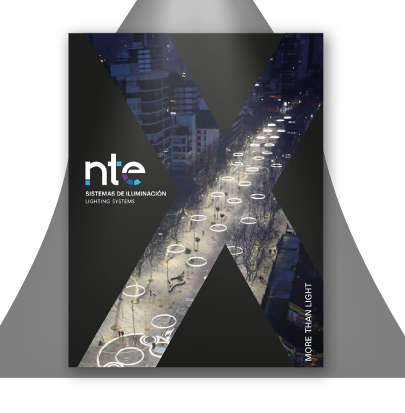It’s important to correctly illuminate roads or highways to avoid accidents and undesired glares especially at night.
The illumination of roads is one of the most important things if we want to make sure every driver is able to drive safely. Because it is proven that worse lit streets bear a higher risk of accidents.
Road illumination has to be adequate. This is why it’s not only important to care about the visibility of the lanes, vehicles and obstacles, but it is mandatory.
Actually, the Ministry of Transport, Mobility and Urban Agendas initiated the Regulation of Circulation 36/2015 in which the criteria of how to illuminate roads (inside or outside of tunnels) is written down. The regulation also seeks to standardize these criteria to make sure all roads are illuminated correctly without any difference between regional or national streets.
In every case the common criteria should be applied. In this regulation the most important points are listed, such as the criteria for lighting a street section, the different types of glares, the different components of a lighting set, the projects realized in this matter or how to take care of illumination and environment.
Avoid glare
Within our recommendations regarding the illumination of roads and highways there are some important considerations to make concerning the lighting not blinding, because if so, it could provoke the drivers losing their visibility for some instants. This would mean that they wouldn’t be able to maintain control over their cars during some seconds or see any obstacles on the road which would inevitably increase the risk of having an accident.
Control intensity
For illuminating roads it is also important to have different types of regulators, e.g. for the intensity, the activation or switch off of the lights.
Because when it comes to programming the whole installation, it’s not necessarily that the light intensity has to be the same at all the times of the day, summer as winter.
Every season (as well as every night) has its own characteristics and the streets lights should adapt themselves to the real demands for a brighter or darker illumination.
Like this we have a win-win situation: saving lots of energy and simultaneously fighting light pollution which brings along so many problems.
Criteria for illuminating streets
Someone might ask himself now why it’s necessary to install luminaires on both sides of the streets. According to the 36/2015 norm this happens on highways or streets with medium traffic (of ≥ 80.000 cars/day or ≥ 60.000 cars/day and more than 120 days of rain/year).
Regarding conventional roads the norm states that they’re not to be illuminated generally even though its illumination could be justified in case the lanes will be considered as an Accident Concentration Section and if within the last two years more than half of its accidents happened at night.
Which type of illumination should be installed
Based on the Europeans’ recommendation there is also the UNE-EN 13201 norm. It recommends different types of illumination for roads and highways.
Because of the characteristics of these streets you can’t illuminate them the same way as urban streets in the city center.
The general criteria established to light highways is to use a ME3 level while for normal roads we’re talking about a ME4 level.
But if it’s an Accident Concentration Section the category could change to a ME2 or ME3 level.
If there are more than 120 days of rain/year it has to be level MEW3 and MEW4 for every type of road (including highways or conventional roads).
And if we’re talking about an ACS again the category changes to MEW2 or MEW3.
Here at NTE we help you to gain the best and safest type of road illumination. We’ve got the best team at hand, always happy to listen and find the adequate solution. All you have to do is get in touch with us!




